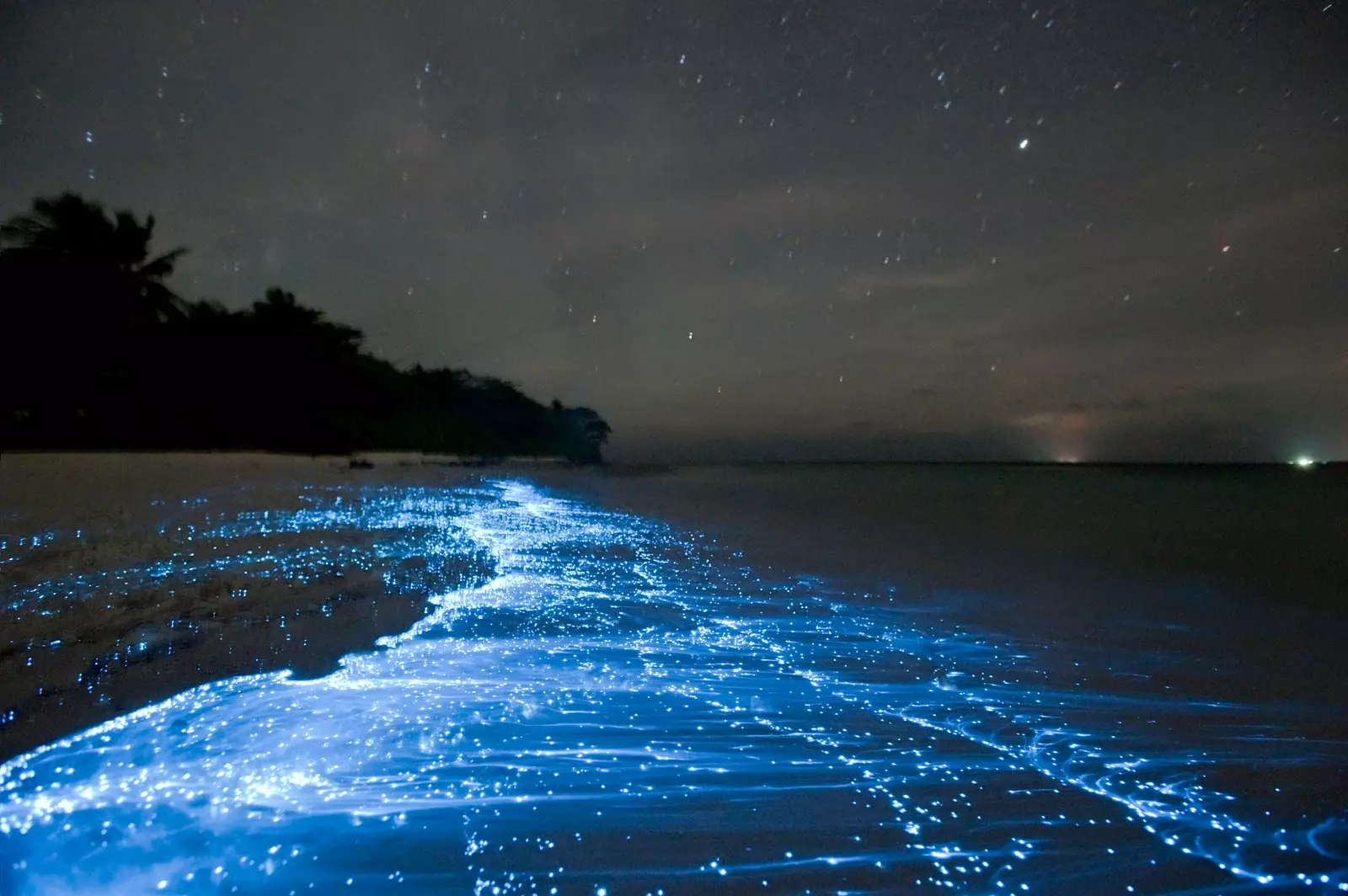
The mystery of the neon blue light in the sea
We propose a challenge: bathe in a sea of stars . Do you think it is something impossible and that we are crazy?
If you remember those summer nights in which you went out to hunt fireflies, perhaps you can imagine or come close to the idea of touch stars in the sea . It is not science fiction and it has its own name: burning either sea of burning
WHAT IS IT AND HOW IS THIS PHENOMENON PRODUCED?
nature is amazing . Imagine that, until today, although there are many scientific studies on the subject, no one has been able to fully explain bioluminescence , a phenomenon that makes some organisms produce and emit cold light by means of a chemical reaction that converts chemical energy into light.
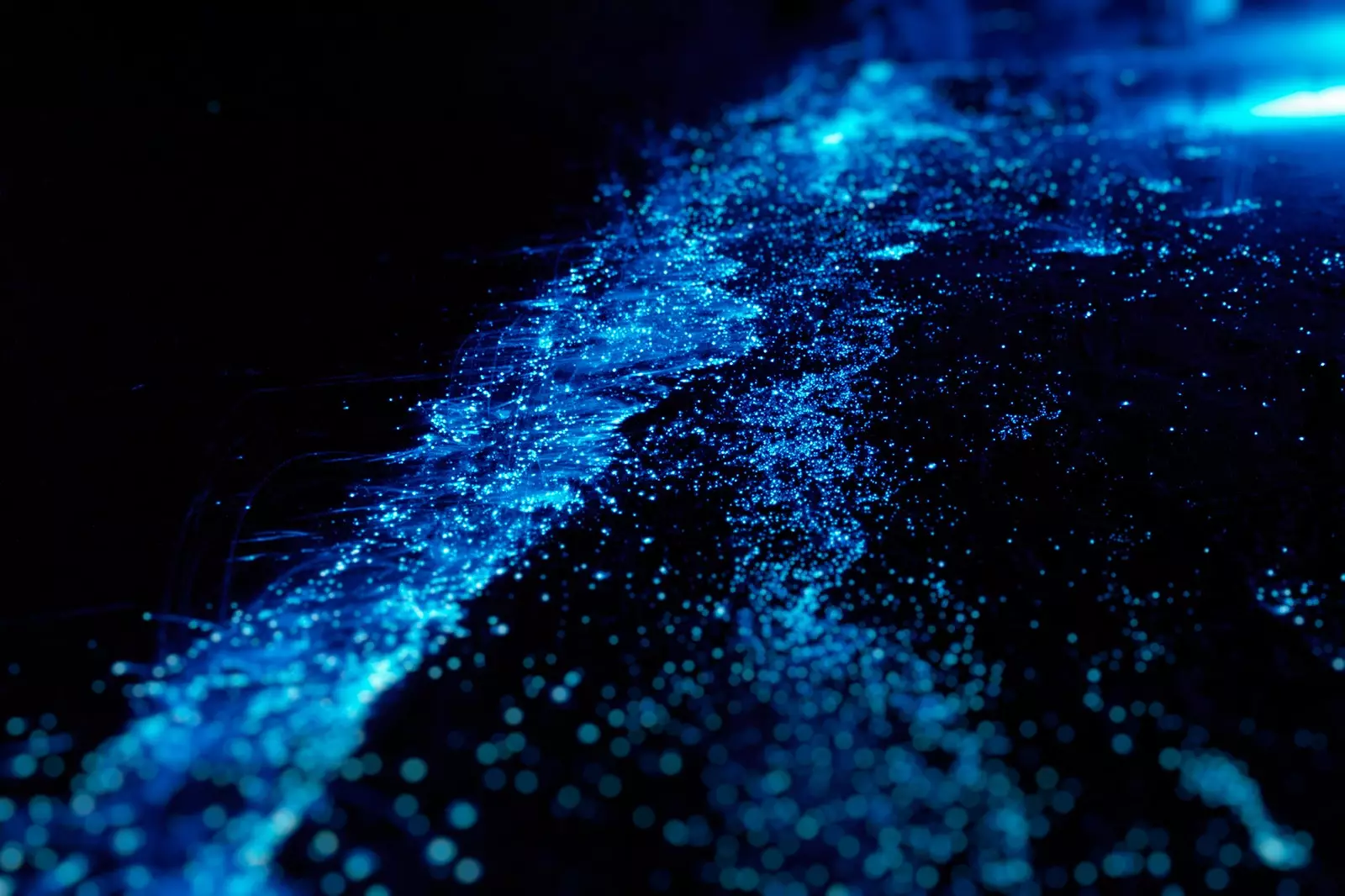
The sea of ardora, or the sea of stars, looks LIKE THIS in all its fullness
Because bioluminescence is much more common than we imagine. If you come across such a spectacle on a night at the beach, don't think about radioactive waves or anything like that. The truth is that this phenomenon is produced by the interaction of millions of tiny organisms with the water as they are disturbed by waves.
The wealth of the Galician coasts allows millions of nutrients to accumulate in its waters and, among all this diversity, the species Noctiluca Scintillans , which etymologically means 'that shines in the night' , better known as 'spark of the sea' . These plants, which sometimes crop up on the beaches, can be seen with the naked eye during the day because they leave orange stains in the water.
Some studies, such as the one being carried out by the University of Vigo together with the Spanish Institute of Oceanography and the Higher Council for Scientific Research , on the Red Tides in Galicia , have concluded that this luminescent is produced by a luciferin system a, which reacts with oxygen and causes blue Fluorescence Flashes, especially noticeable at night, when movement or vibration occurs on the surface of the water (for example, with the passage of a ship).
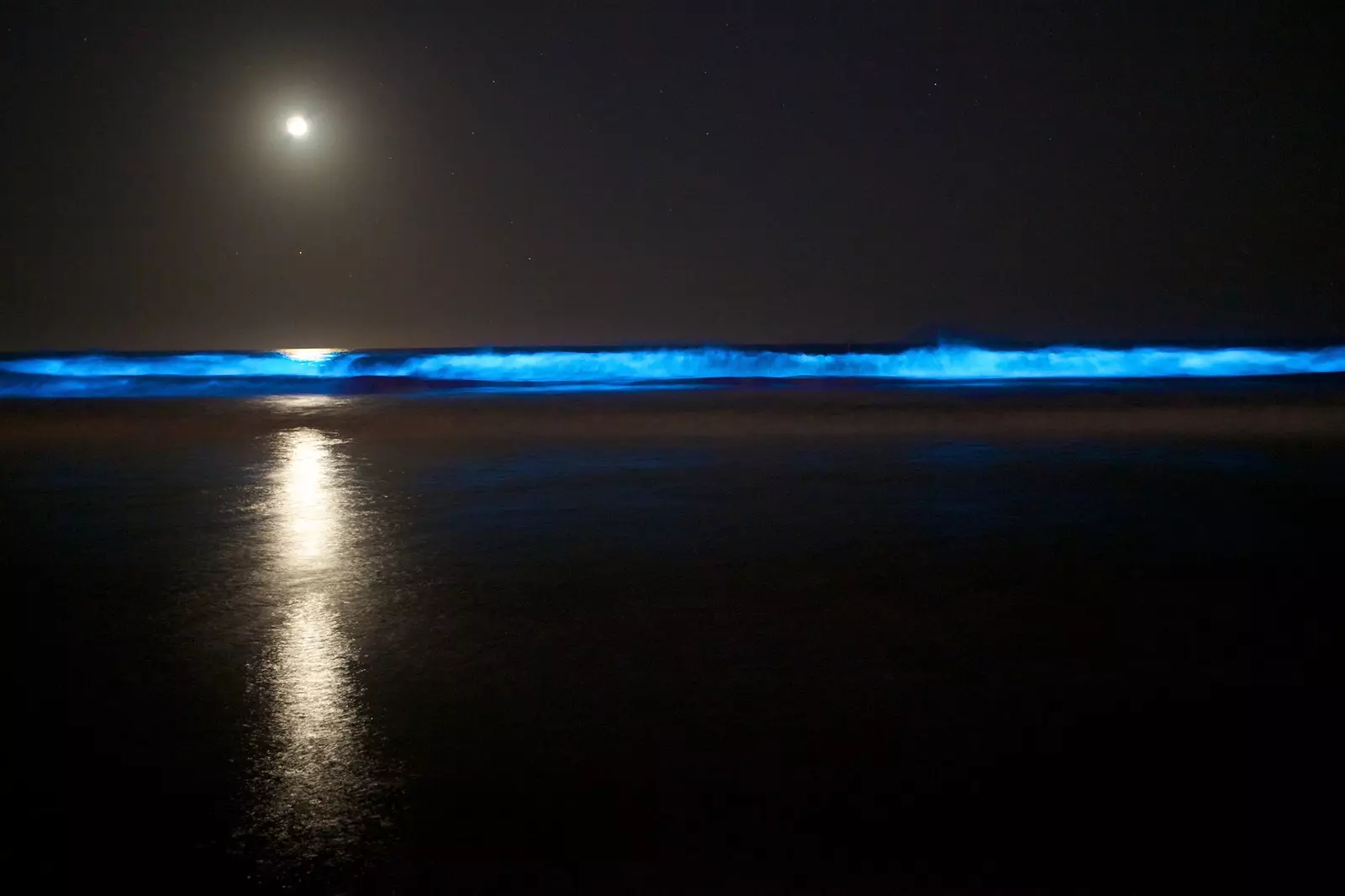
And a wave of burning
ALARM AGAINST THIEVES
Fortunately, it is now known that this show, known as ardentía or sea of ardor It is not a legend or a myth. Scientific research on this phenomenon is recent, but there is a hypothesis, actually the most widespread, of why these microalgae have the ability to create bioluminescence: It would be a defense mechanism with the purpose of not serving as food for its predators.
This theory, better known as 'burglar alarm' , considers that these microalgae are food for other zooplankton species that, when ingested, they also give off light because the algae's bioluminescent cells continue to glow , and thus become an easy target for their predators.
Beyond the scientific explanation, the sea of ardora is a great example of the spectacles that nature is capable of offering us. And also one of the most elusive when it comes to being caught on camera , hence the first images of ardentía cases are recent.
MYTHS, LEGENDS AND TWENTY THOUSAND LEAGUES OF SUBMARINE JOURNEY
The Sea of Ardora, first named by Julio Verne in his work Twenty thousand leagues under the sea when he recounted the journey of the Nautilus through a phosphorescent layer (attributed to luminous marine animals), was also, for centuries, a myth of the sailors who sailed the Indian Ocean.
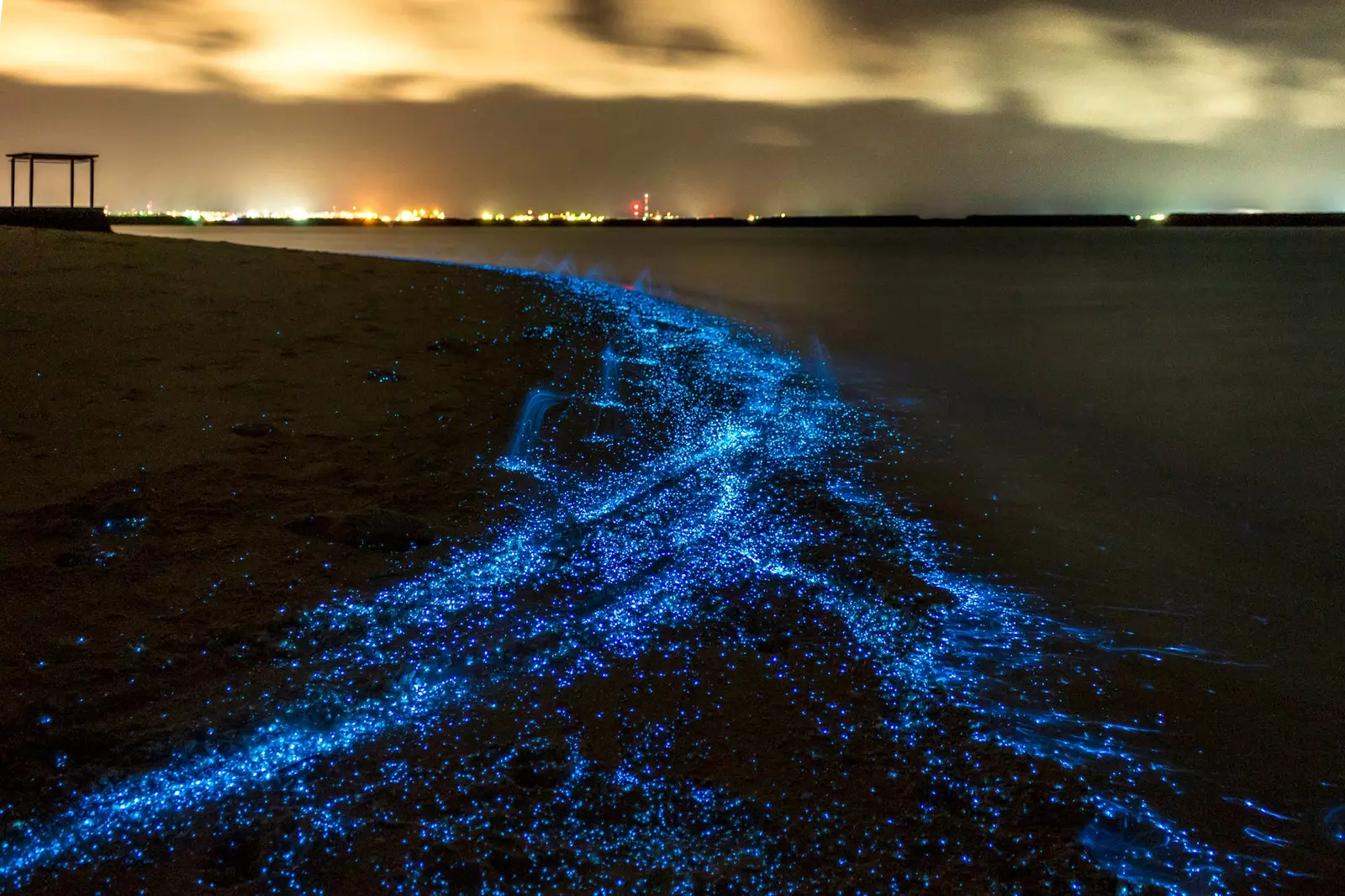
It is not usual to have such a clear image but in Maldives it is possible
Scientists recorded this phenomenon in 1915 , mostly in the Indian Ocean and in areas close to Indonesia. Other places where this light show could be seen were the coast of Somalia (Africa), the south of Portugal, the Phosphorescent Bay in Puerto Rico and also on the Galician coast.
There is a link to the Noctiluca with marine legends since ancient times. Among these stories is the one that relates her to the origin of the term ‘estella maris’ . The days of calm sea, blue fluorescent lights around the boats formed a wake that helped sailors navigate smoothly.
This was later related to Marian protection in the Christian religion . As in the image of the Virgin of Carmen, patron saint of the sea , in which at the foot of it you can see some stars representing the 'estella'. Those lights were due to the existence of the Noctiluca Scintillans , that in the face of any vibration or sudden movement, in this case the movement of ships, generated bioluminescence.
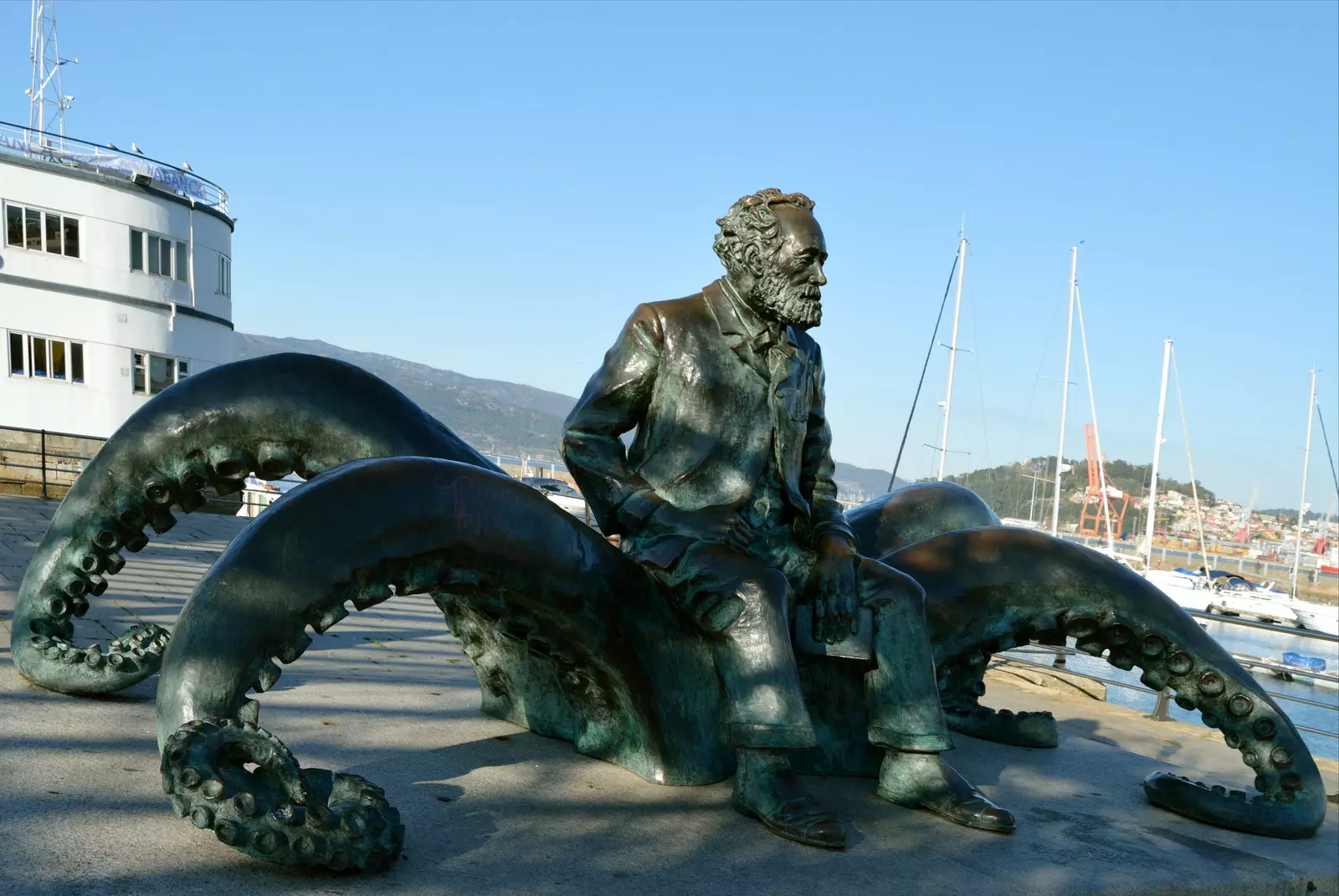
The statue of Verne that reigns in the Marina of the city of Vigo
WHERE AND WHEN TO SEE IT IN GALICIA?
The ideal places are some paradisiacal enclaves of Galicia such as the Cies Islands wave Island of Ons . But they are not exclusive either, since last summer some towns on the Costa da Morte, such as Muxía or Carnota , and other areas further south, such as **Queiruga beach, in Porto do Son, A Lanzada beach, in O Grove or Vigo **, witnessed the burning sea.
The favorite moment to see it in Galicia is month of September, favored by the warm temperatures of summer and helped by the vibrations of the waves that help them light up.
If during the day, while you are on the beach, you notice that there are small or not so small oily orange stains in the water stay until dawn because that night you will be lucky enough to bathe in a sea of stars.
Our recommendation is that you jump into a camping weekend in one of the places that have already witnessed this phenomenon and let yourself be carried away by the night and the sounds of the sea while keeping your eyes open.
Going into the water on a new moon night with the whole sky covered with stars and the sea begins to shine with each movement of your body It is an amazing show and a unique and unrepeatable experience. Also in September the water is a bit warmer, you can handle it.
Sometimes this microalgae is so abundant that, when the tide begins to go out, sparkles come out of the sand. So this summer if the stars align and luck is with you or, rather, if you look for it, you will be able to live a unique marine experience: swim in a sea of ardor.
